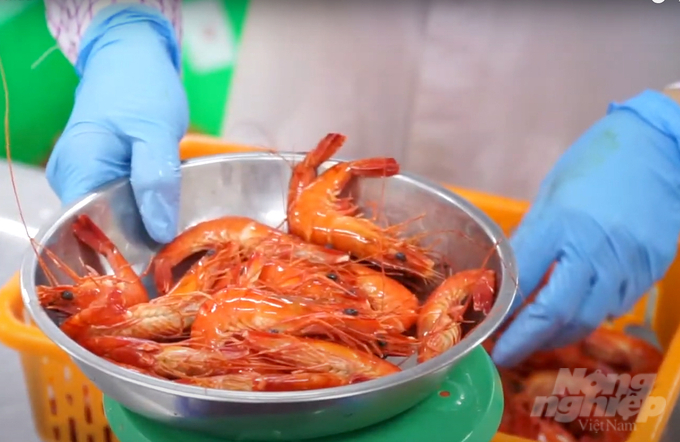Increase in average shrimp price in 2022
(VAN) Freight rates and many other costs remaining high may push shrimp price on world markets to continue
The processing capacity of Vietnam's shrimp industry is now among the highest in the world. Photo: Son Trang.
According to Dr. Ho Quoc Luc, Chairman of the Board of Directors of Fimexvn, the current global shrimp production output is estimated at 5 million tons, with an average growth of 5% every year.
Ecuador, India and Vietnam are the leading shrimp producing countries countries in the world. Since 2018, shrimp production in Ecuador has grown spectacularly, making the country the world's leading shrimp producer in terms of output, closely followed by India.
With an output of at least 900 thousand tons in 2021, Vietnam is currently the third largest shrimp producer in the world. Other countries behind Vietnam in the Top 6 countries with the largest shrimp production globally include Indonesia, China and Thailand.
Compared to other top shrimp producing countries in the world, Vietnamese shrimp are relatively expensive. Mr. Le Van Quang, Chairman of the Board of Directors of Minh Phu Group, said that because shrimps are mainly produced on a small and retail scale, raw materials for the production of feed and medicine mainly depend on imports so the cost of shrimp production in Vietnam is currently 30% higher compared to that in India, Indonesia and several times higher than that of Ecuadorian shrimp.
In addition to low production costs, Ecuador also has a great advantage due to the fact that its transportation and logistics costs to the US and the EU are considerably lower compared to Asian countries.
As a result, Vietnamese shrimps in some of the largest markets are facing many difficulties in competing with shrimp from the aforementioned countries. For example, Ecuadorian shrimps in the US market account for approximately 40%, Indian and Indonesian shrimps account for nearly 20% each, while Vietnamese shrimps currently account for only 10%.
The cost of farmed shrimps in Vietnam is still high, so the shrimp industry has to compete using deeply processed products. Photo: Son Trang.
After acknowledging the great limitation in production costs, Vietnam's shrimp industry has invested deeply into processing value-added products and has since achieved great targets.
Mr. Ho Quoc Luc shared that the deep processing capacity for shrimp products in Vietnam was lower than that of Thailand and Indonesia over 10 years ago. However, the current processing capacity of the Vietnamese shrimp industry has surpassed Indonesia to be on par with Thailand's; both countries are regarded as the two highest-class shrimp processing countries in the world.
Thanks to a high level of processing, Vietnamese shrimps are gaining a largest market share in international markets that favor deep-processed products such as Japan, Korea, Australia and the UK. On the other hand, value-added products also help Vietnamese shrimps maintain market share in the US in the face of fierce competition from Ecuador, India and Indonesia.
Furthermore, some of Vietnamese processed shrimp products are also performing well in China - a market that specializes in importing raw shrimp to process shrimp products for domestic consumers. Namely, the product of boiled (steamed) black tiger shrimp with appealing red color belonging to several Vietnamese factories is currently being bought in bulk by the Chinese market. Vietnam is considered a prominent producer of black tiger shrimp.
Consequently, Mr. Ho Quoc Luc said that, in order to maintain Vietnam's position as well as its competitiveness in the world market, the Vietnam's shrimp industry needs to promote the strength of deep processing capacity. If the deep processing capacity is properly maintained and promoted, Vietnamese shrimps can completely continue to retain the top position in important markets such as Japan, Korea, Australia and the UK, maintain market share in the US, China as well as increase market share in the EU.
The shrimp processing industry is also continuing to promote the application of scientific and technical achievements to reduce labor and increase labor productivity.
The logistics system is becoming more polished with increasingly full ports and warehouses; service capacity is gradually improved, contributing to improving the overall competitiveness of Vietnamese shrimps.
In addition, Vietnam's shrimp industry needs to increase production to boost competitiveness and meet the needs of the market, which include not only the export market but also the domestic and foreign markets because of the domestic demand for shrimp consumption is also on a strong rise in company with the economic and social development.
Translated by Nguyen Hai Long

